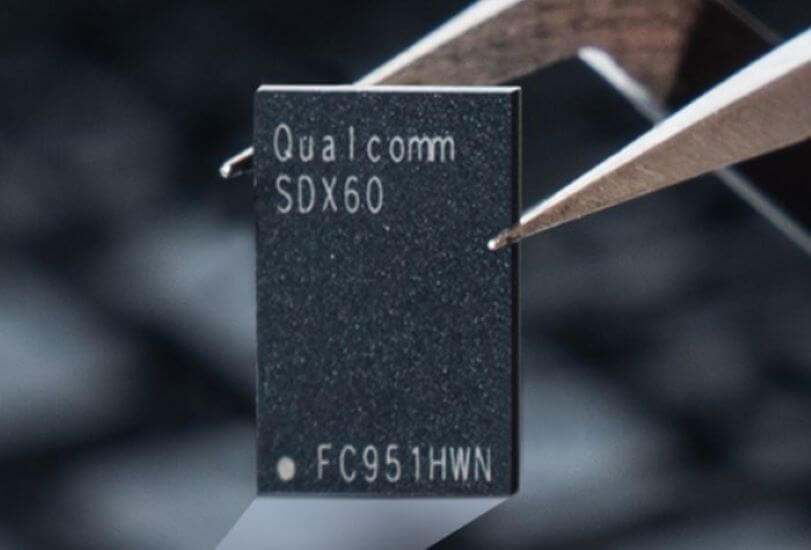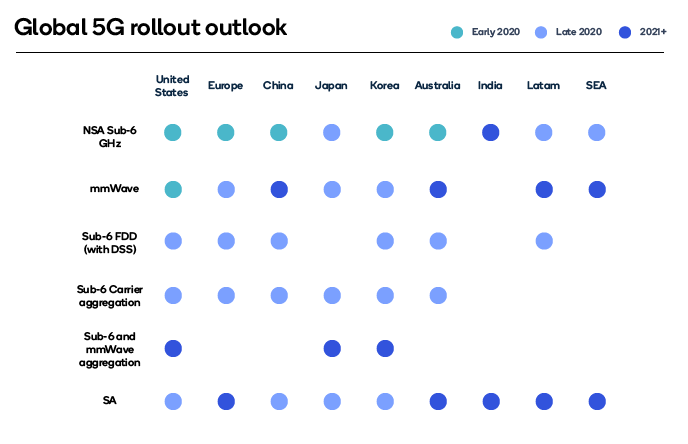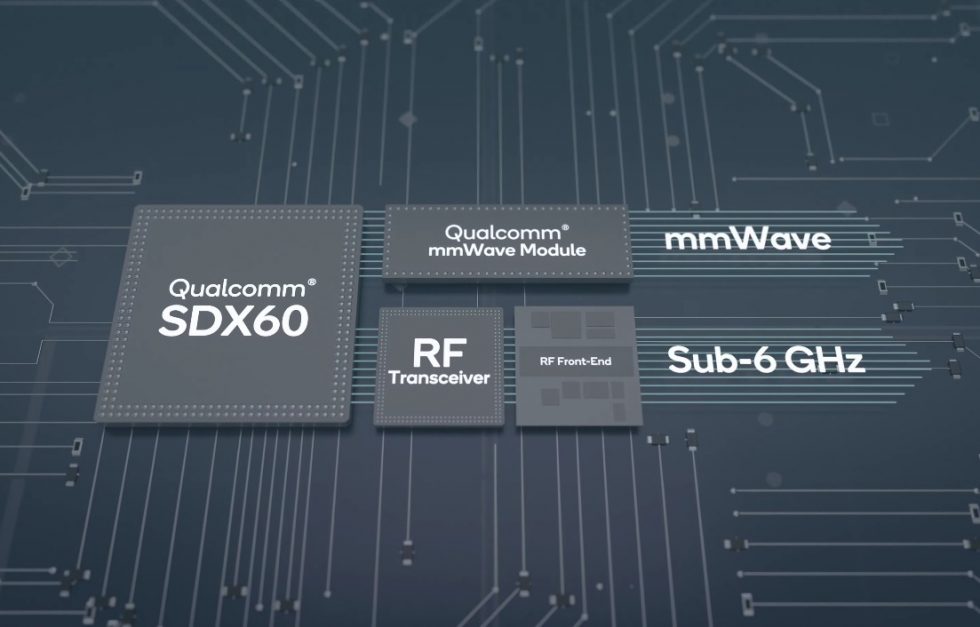
The News: Qualcomm Inc. on Tuesday introduced the Snapdragon X60, a new 5G Modem designed to connect mobile phones to 5G networks that operate differently around the world.
Qualcomm is the world’s biggest supplier of mobile phone chips. The San Diego, California-based company said its new X60 modem chip, along with a new antenna chip, will be the first to aggregate signals sent over the disparate frequencies used in the two variants of 5G networks, a feature the company said will help boost download speeds. Read the full release on Reuters.
Analyst Take: Qualcomm continues to take a global leadership role in the 5G chip space with the announcement of the X60 modem and the new QTM 535 antenna chip. This announcement should be met by operators with a strong positive response as it will be favorable to those with diverse spectrum holdings. The new chip offers flexibility to support all operators worldwide and the vast 5g spectrum bands in the market–Most notably Sub-6 and mmWave and their respective variants.
Snapdragon X60 is Focused on Aggregation – Combining Spectrum is Critical to 5G
5G is a highly complex topic and despite the fact that most users don’t really understand how it works, the bottom line is there are two major types of 5G frequency (Sub-6 and mmWave) and each has a few variants in the market based on band and deployment mode.

As you can see in the global rollout data provided by Qualcomm, there is a wave of different 5G deployments that will be coming into market over the next few years. In order to support these frequencies, bands and deployment modes, the modem has to be able to aggregate the signals to discern for the best signal quality available to the user. In instances where there are multiple networks available, aggregation will be the key to offer the best possible user experience. The X60 offers this capability, which will benefit both operators and device OEMs. This will be especially handy in enabling mmWave where available for those much greater peak speeds that will be more spotty in nature during this first phase of 5G deployment.

The New QTM 535 Antenna Module
A lot of attention is always placed on the modem, but in 5G it is the system that includes the modem and RF that is so critical to performance. The company is claiming (no size specs available yet) is smaller than the previous generation and this will allow for new thinner mmWave smartphone designs, with improved mmWave performance.
Built on 5nm Process Technology
One of the more interesting items of note from the announcement was Qualcomm’s commitment to using 5nm process technology–likely from Samsung or TSMC, which are the usual suspects for Qualcomm. This is new technology that has touted higher yields and performance and early indications are that 5nm will be available in volume by mid-2020. So on the surface this matches the expectations that Qualcomm is setting for seeing these start to enter the market in devices in the first half of 2021.
Overall Impressions of Snapdragon X60 Announcement
This announcement is very important for Qualcomm, Device OEMs and Network Operators around the world. Having a flexible modem-RF system that can handle diverse networks and offer high performance will serve an important role in the delivery of high quality 5G user experiences.
It’s important to note that no specific timeframe for the launch has been given, but the company did indicate that it would be about a year from now before we would see the new Snapdragon X60 showing up in premium tier devices around the world.
I believe that the most important note of interest around this launch is a trend toward smooth network aggregation of 5G signals. Given most operators will have a few offerings depending on the markets served, having the capability to aggregate and deliver best experience will be important for device and network performance, which will be important to the growing adoption of 5G.
Futurum Research provides industry research and analysis. These columns are for educational purposes only and should not be considered in any way investment advice.
Latest insights from the Futurum Research team:
China Chipping Away at Smart Speaker Market as Amazon Maintains Lead
Amazon, the US Government and the JEDI Contract–Futurum Tech Podcast
Nvidia Breaks Revenue Records in Data Center as AI Demand Surges
Image Credit: Qualcomm
The original version of this article was first published on Futurum Research.
Daniel Newman is the Principal Analyst of Futurum Research and the CEO of Broadsuite Media Group. Living his life at the intersection of people and technology, Daniel works with the world’s largest technology brands exploring Digital Transformation and how it is influencing the enterprise. From Big Data to IoT to Cloud Computing, Newman makes the connections between business, people and tech that are required for companies to benefit most from their technology projects, which leads to his ideas regularly being cited in CIO.Com, CIO Review and hundreds of other sites across the world. A 5x Best Selling Author including his most recent “Building Dragons: Digital Transformation in the Experience Economy,” Daniel is also a Forbes, Entrepreneur and Huffington Post Contributor. MBA and Graduate Adjunct Professor, Daniel Newman is a Chicago Native and his speaking takes him around the world each year as he shares his vision of the role technology will play in our future.

